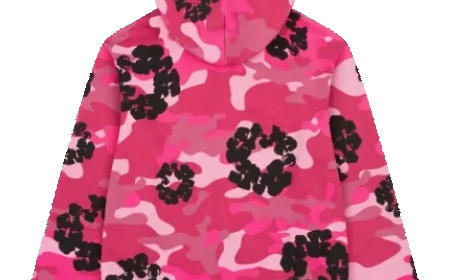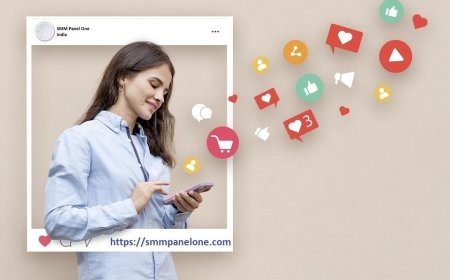How to book a Miami wine tasting party
How to Book a Miami Wine Tasting Party Planning a Miami wine tasting party is more than just gathering friends for a glass of red or white—it’s an immersive experience that blends the city’s vibrant culture, tropical ambiance, and world-class culinary scene. Whether you’re celebrating a milestone, hosting a corporate event, or simply indulging in the art of fine wine, organizing a curated wine tas
How to Book a Miami Wine Tasting Party
Planning a Miami wine tasting party is more than just gathering friends for a glass of red or white—it’s an immersive experience that blends the city’s vibrant culture, tropical ambiance, and world-class culinary scene. Whether you’re celebrating a milestone, hosting a corporate event, or simply indulging in the art of fine wine, organizing a curated wine tasting in Miami offers a unique opportunity to elevate social connections through sensory discovery. Unlike traditional parties, a wine tasting focuses on education, appreciation, and nuanced flavor profiles, making it an elegant and memorable choice for discerning hosts.
Miami’s diverse landscape—from sleek downtown lofts and oceanfront villas to lush botanical gardens and historic Art Deco mansions—provides an unparalleled backdrop for wine events. The city is home to an increasing number of certified sommeliers, boutique wine importers, and mobile tasting services that specialize in tailoring experiences to individual preferences. Booking a Miami wine tasting party requires more than just picking a date and ordering bottles; it demands thoughtful planning, local insight, and an understanding of logistics, regulations, and guest expectations.
This guide walks you through every step of the process—from initial concept to post-event follow-up—ensuring your Miami wine tasting party is seamless, sophisticated, and unforgettable. By the end, you’ll know exactly how to select the right provider, design a compelling theme, manage guest logistics, and create an atmosphere that turns a simple gathering into a true sensory journey.
Step-by-Step Guide
Define Your Purpose and Guest Profile
Before you begin contacting vendors or scouting venues, clarify the core objective of your event. Are you hosting an intimate gathering of five close friends who appreciate bold Cabernets? Are you organizing a corporate team-building activity with 30 attendees? Or perhaps you’re celebrating a wedding anniversary with a romantic, candlelit tasting? Your purpose directly influences the scale, style, and structure of the event.
Equally important is understanding your guest profile. Consider age range, wine familiarity, dietary restrictions, and cultural preferences. For example, guests unfamiliar with wine may benefit from a beginner-friendly flight featuring approachable varietals like Pinot Noir or Sauvignon Blanc. Meanwhile, seasoned enthusiasts may expect rare vintages, vertical tastings, or obscure regions like Priorat or Tokaj. Tailoring the experience to your audience ensures engagement and satisfaction.
Choose Your Format: In-Home, Venue-Based, or Mobile
Miami offers three primary formats for wine tasting parties:
- In-Home Tastings: Ideal for private residences with sufficient space. These offer intimacy and personalization. You provide the setting—whether a poolside terrace in Coral Gables or a penthouse with ocean views—and the provider brings everything else: glasses, decanters, wine, and expertise.
- Venue-Based Events: Perfect for larger groups or when you want a dedicated event space. Popular venues include The Betsy Hotel’s rooftop lounge, The Fillmore Miami Beach, or private estates in Fisher Island. These often come with catering, lighting, and staff support.
- Mobile Tasting Services: A growing trend in Miami, where licensed professionals arrive fully equipped with portable bars, climate-controlled wine carriers, and educational materials. They transform any location into a tasting room within an hour.
Each format has trade-offs. In-home is cost-effective but requires more coordination on your part. Venue-based offers convenience but may have minimum spend requirements. Mobile services strike a balance—professional, flexible, and scalable.
Set a Budget and Timeline
Wine tasting parties in Miami can range from $50 per person for a casual, three-wine flight to $250+ per person for premium, multi-course pairings with rare bottles. Establish a realistic budget early. Break it down into categories:
- Wine and spirits (50–60%)
- Provider service fee (20–30%)
- Venue rental or setup (10–15%)
- Catering and snacks (5–10%)
- Decor and ambiance (optional, 0–5%)
Book at least 6–8 weeks in advance, especially during peak seasons (November–April). Popular sommeliers and venues fill up quickly. For holidays or special occasions like Valentine’s Day or New Year’s Eve, aim for 10–12 weeks ahead. Early booking also gives you time to customize menus, secure permits (if needed), and send invitations.
Research and Select a Reputable Provider
Not all wine tasting services are created equal. Look for providers with:
- Professional certifications (e.g., Court of Master Sommeliers, WSET Level 2 or higher)
- Transparent pricing and no hidden fees
- Positive reviews across multiple platforms (Google, Yelp, WeddingWire)
- Experience with Miami-specific venues and weather considerations
- Flexible customization options
Search terms like “Miami private wine tasting sommelier” or “luxury wine experience Miami” will yield results. Cross-reference providers with local food and wine blogs like Miami New Times or South Florida Wine & Dine for curated recommendations. Ask for references or sample menus. A reputable provider will gladly share past client testimonials and event photos.
Design Your Wine Flight and Pairings
A well-crafted wine flight tells a story. It might follow a geographic theme (e.g., “Wines of the Mediterranean”), a grape variety progression (e.g., “From Light to Bold: Chardonnay to Syrah”), or a seasonal pairing (e.g., “Summer Breezes: Crisp Whites and Rosés”).
Typical flight structures include:
- Three-Wine Flight: Ideal for beginners or shorter events (60–90 minutes). Example: Sauvignon Blanc, Pinot Noir, Malbec.
- Six-Wine Flight: Best for intermediate enthusiasts (90–120 minutes). Example: Sparkling, White, Rosé, Light Red, Bold Red, Dessert Wine.
- Themed Flight: Includes 4–8 wines with curated food pairings. Example: “Tropical Pairings: Miami-Style” featuring Key lime-infused cheeses, coconut shrimp, and a Moscato d’Asti.
Pairings are critical. Offer small bites that enhance—not overpower—the wine. Think: aged manchego with quince paste, smoked almonds, dark chocolate truffles, or chilled oysters. Avoid spicy or overly salty foods that can clash with delicate aromas. Many providers include a professional pairing menu as part of their service.
Book and Confirm Your Venue or Location
If using an in-home or mobile service, ensure the location is accessible, well-lit, and has adequate seating and ventilation. For outdoor events in Miami, always have a backup indoor plan due to unpredictable afternoon thunderstorms. Confirm parking availability, restroom access, and power outlets for any audio or lighting equipment.
If selecting a venue, visit in person. Ask about:
- Minimum guest requirements
- Corkage fees (if bringing outside wine)
- Alcohol service permits
- Setup and cleanup policies
- Availability of staff (servers, bartenders)
Some venues require you to use their in-house catering. Others allow outside vendors. Clarify this upfront to avoid surprises.
Send Invitations and Manage RSVPs
Use digital tools like Evite, Facebook Events, or Google Forms to send invitations. Include:
- Date, time, and precise location (with Google Maps link)
- Dress code (e.g., “Resort Elegant” or “Summer Chic”)
- RSVP deadline (at least 7 days prior)
- Any special instructions (e.g., “Please notify us of allergies”)
- What’s included (wine, food, education, souvenir glasses)
Track responses diligently. Confirm final headcount with your provider 48 hours before the event. This ensures accurate wine quantities and seating arrangements.
Prepare for the Day of the Event
On the day of your tasting:
- Chill all white and sparkling wines in advance. Red wines should be served at 60–65°F—not room temperature.
- Arrange tasting glasses (one per guest, preferably ISO-standard wine glasses) on tables with water carafes and spittoons (discreetly placed).
- Set out palate cleansers: unsalted crackers, sliced apples, or plain bread.
- Ensure ambient lighting is soft and warm. Avoid fluorescent lights.
- Play curated background music—jazz, bossa nova, or ambient instrumental tracks.
- Have a designated host or point person to greet guests and guide them through the flow.
If your provider is handling everything, confirm their arrival time and setup requirements. Provide clear directions and contact info in case of delays.
Facilitate the Experience
Even with a professional sommelier, your role as host matters. Introduce the tasting, explain the format, and encourage questions. Avoid rushing the flow. Allow time for guests to smell, swirl, sip, and savor. Encourage discussion: “What notes do you detect?” “Does the finish linger?”
Provide printed tasting sheets with wine names, regions, and flavor profiles. Many providers include these, but having extras on hand shows attention to detail.
Wrap Up and Follow Up
As the event winds down, thank guests for attending. Offer a small takeaway: a branded wine stopper, a printed wine pairing guide, or a discount code for the featured winery.
Within 24 hours, send a personalized thank-you message via email or text. Include a few photos from the event (if shared with permission) and a link to a digital thank-you card. This reinforces goodwill and encourages future bookings or referrals.
Best Practices
Prioritize Quality Over Quantity
It’s better to serve four exceptional wines than eight mediocre ones. Focus on wines that are well-balanced, properly stored, and clearly labeled. Avoid overloading guests with too many options—cognitive fatigue sets in after 5–6 wines. A curated, thoughtful selection leaves a stronger impression than a long list.
Temperature Control Is Non-Negotiable
In Miami’s humid climate, wine can warm up quickly. Use insulated wine sleeves, ice buckets with fresh ice (changed every 30 minutes), or portable wine chillers. Never serve red wine at 75°F—it becomes flabby and alcoholic-tasting. White wines should be cool but not icy. A thermometer in the fridge or cooler helps maintain consistency.
Use the Right Glassware
While you don’t need crystal, avoid plastic or thin, flimsy glasses. ISO-standard glasses (tall, narrow bowl, tapered rim) enhance aroma and flavor delivery. If budget is tight, rent glassware through your provider or a local event rental company. Glassware significantly impacts perception—research shows people rate wine higher when served in proper glasses.
Balance Education with Enjoyment
A wine tasting should be enlightening, not lecture-heavy. The best sommeliers weave stories into the experience: the vineyard’s terroir, the winemaker’s philosophy, or a quirky historical tidbit. Keep explanations concise—30–60 seconds per wine. Let guests taste, then ask open-ended questions to spark conversation.
Consider Dietary and Cultural Sensitivities
Miami is a multicultural city. Offer vegan, gluten-free, and nut-free pairing options. Avoid pork-based charcuterie if serving Muslim or Jewish guests. Label all food items clearly. If unsure, ask guests during RSVPs about dietary needs.
Plan for Alcohol Consumption Responsibility
Even though this isn’t a cocktail party, alcohol is still involved. Provide non-alcoholic alternatives: sparkling water with citrus, artisanal sodas, or mocktails made with grape juice and herbs. Encourage water consumption between tastings. If serving late into the evening, consider arranging rideshare credits for guests.
Document and Share the Experience
Take candid photos during the event (with permission). These become valuable marketing assets if you’re a host who plans to repeat the experience. Share them on social media with hashtags like
MiamiWineTasting, #SouthFloridaWine, or #WineAndSunset to connect with local wine communities.
Follow Local Regulations
Miami-Dade County allows private wine tastings in homes without a permit if no alcohol is sold and no admission fee is charged. However, if you’re hosting at a commercial venue or charging guests, alcohol service laws may apply. Always confirm with your provider—they should be licensed and insured. Avoid unlicensed “pop-up” tastings; they risk legal and safety issues.
Tools and Resources
Recommended Wine Tasting Apps
- Wine-Searcher: Find pricing, availability, and reviews for any bottle featured in your tasting.
- Delectable: Scan wine labels to get tasting notes, pairings, and community ratings.
- Vivino: Popular in Miami for discovering new wines and tracking personal favorites.
- Wine Folly: Offers free visual guides to grape varieties, regions, and tasting techniques—perfect for handouts.
Local Miami Wine Retailers and Distributors
Support local businesses by sourcing wines through Miami-based importers and shops:
- Wine Library Miami: Offers private tasting events and curated selections from boutique producers.
- La Cave Miami: Specializes in natural and organic wines; hosts monthly tastings open to the public.
- Wine & Dine Miami: Provides full-service mobile tasting packages with Spanish, French, and Italian selections.
- Barry’s Wine & Spirits (Coral Gables): Known for rare vintages and personalized recommendations.
Equipment to Consider
Even if your provider supplies everything, having these items on hand enhances the experience:
- Wine aerators (for bold reds)
- Decanters (for older wines)
- Spittoons or small cups for discarding wine
- Wine stoppers to preserve opened bottles
- Reusable tasting notes cards and pens
- LED string lights or candles for ambiance
- Bluetooth speaker for curated playlists
Online Platforms for Booking
Use these platforms to discover and book Miami wine tasting experiences:
- Eventbrite: Search “Miami wine tasting” for public or private group events.
- Peerspace: Book unique venues like rooftop terraces, art galleries, or historic homes.
- Thumbtack: Hire local sommeliers and compare quotes from vetted professionals.
- Instagram: Follow hashtags like
MiamiWineLife or #WineTastingMiami to find influencers and providers showcasing real events.
Recommended Reading and Media
Deepen your knowledge with these resources:
- The Wine Bible by Karen MacNeil
- Wine Folly: The Essential Guide to Wine by Madeline Puckette
- Podcast: “The Wine Podcast” by James Suckling
- YouTube Channel: “Wine With Wanda” – short, engaging wine education clips
Real Examples
Example 1: Intimate Anniversary Tasting in Coconut Grove
A couple celebrating their 10th anniversary hired a mobile sommelier through Thumbtack for a sunset tasting on their lanai. They chose a “Old World vs. New World” theme: a French Burgundy versus a California Pinot Noir, a Spanish Rioja versus an Australian Shiraz. The sommelier brought artisanal cheeses from a local dairy, dark chocolate from Miami’s own Chocodile, and paired each wine with a story about the winemaker. Guests included only six close friends. The event lasted 90 minutes, ended with a toast under string lights, and the couple received handwritten tasting notes as keepsakes. Cost: $850 total.
Example 2: Corporate Team Building at The Betsy Hotel
A tech startup hosted 25 employees for a “Wine & Wellness” afternoon. The event included a guided tasting of low-sulfite, organic wines, followed by a mindfulness exercise led by a yoga instructor. The hotel provided a private garden space, light Mediterranean bites, and branded wine glasses. The sommelier tailored the flight to include wines from women-owned vineyards. Attendees received a digital booklet with wine pairings and wellness tips. Feedback: 96% rated it “excellent.” Cost: $18,000 (includes venue, catering, and service).
Example 3: Bachelorette Party in South Beach
A group of eight friends booked a 3-hour “Rosé All Day” party at a rented beachfront condo. The provider brought 12 different rosés from Provence, Italy, and California, with chilled oysters and watermelon-feta skewers. Guests wore floral headbands and took photos with a custom backdrop. A “Guess the Vintage” game was played with prizes. The host created a Spotify playlist called “Pink Vibes Only.” The event ended with a group toast using champagne flutes. Cost: $1,200.
Example 4: Cultural Fusion Tasting in Little Havana
A local food blogger hosted a “Cuban Wine Pairing” event in collaboration with a Cuban winery importer. Guests tasted a rare Cuban red wine (produced in the island’s eastern mountains) alongside traditional ropa vieja, plantain chips, and guava pastries. The sommelier explained how Cuban viticulture is emerging after decades of isolation. The event drew 40 attendees and was featured in Miami New Times. It sparked a monthly “Global Wine & Cuisine” series. Cost: $2,500 (funded through ticket sales).
FAQs
How much does a Miami wine tasting party typically cost?
Costs vary widely based on size and luxury level. A basic in-home tasting for 6–8 people starts at $500–$800. Mid-range events with 15–20 guests and premium wines range from $1,500–$4,000. High-end venue-based experiences with catering and décor can exceed $10,000. Most providers offer package pricing—ask for a detailed breakdown.
Can I bring my own wine to a Miami wine tasting?
Yes—if you’re hosting at home or a private venue that allows it. However, many professional providers prefer to supply the wine to ensure quality, temperature control, and pairing harmony. If you want to include a personal favorite, discuss it with your provider in advance—they may suggest complementary wines to balance the flight.
Do I need a permit to host a wine tasting in Miami?
No, if it’s a private event with no alcohol sales and no admission fee. If you’re charging guests or hosting at a commercial venue, alcohol service permits may be required. Always confirm with your provider—they should handle compliance.
How long should a wine tasting party last?
For 3–4 wines: 60–90 minutes. For 5–8 wines: 90–120 minutes. For themed or multi-course events: 2–3 hours. Allow 10–15 minutes for introductions and mingling. Avoid exceeding 3 hours—palate fatigue sets in.
What’s the best time of year to host a wine tasting in Miami?
November through April is ideal—mild temperatures, lower humidity, and fewer storms. Summer months (June–September) are hot and rainy, but indoor events with AC work well. Sunset tastings in spring and fall are especially popular.
Can children or non-drinkers attend?
Absolutely. Many hosts include non-alcoholic pairings like sparkling grape juice, herbal infusions, or mocktails. Designate a “taste-free zone” with snacks and activities for younger guests. A well-planned event accommodates all.
How do I choose wines that appeal to beginners and experts alike?
Use a progression format: start light and crisp (e.g., Pinot Grigio), move to medium-bodied (e.g., Chardonnay or Grenache), then finish with bold (e.g., Cabernet Sauvignon) and sweet (e.g., Port). Include one “surprise” wine—a rare or unexpected bottle—to spark conversation. Provide simple tasting notes with relatable descriptors like “tastes like ripe strawberries” or “smells like fresh rain.”
Are there vegan-friendly wine tasting options in Miami?
Yes. Many Miami providers now offer vegan-certified wines (free of animal-derived fining agents) and plant-based pairings. Ask for “vegan-friendly” or “unfined/unfiltered” wines. Popular vegan brands include Frey Vineyards, Stellar Organics, and Bonterra.
What if it rains during an outdoor tasting?
Always have a backup plan. Choose venues with covered patios or indoor alternatives. If hosting at home, move to a living room or screened porch. Provide umbrellas or ponchos if guests are arriving from outside. Weather is a common concern in Miami—professional providers include contingency plans in their contracts.
How can I make my wine tasting stand out?
Add unique touches: a live acoustic guitarist, a mini art exhibit featuring wine-themed paintings, a “build-your-own-charcuterie” station, or a custom cocktail inspired by one of the wines. Personalization transforms a standard tasting into a signature experience.
Conclusion
Booking a Miami wine tasting party is an art that blends hospitality, sensory science, and local culture. By following this comprehensive guide—from defining your purpose to selecting the right provider and crafting a memorable flow—you’re not just hosting an event; you’re creating an experience that lingers in the memory long after the last sip.
Miami’s unique blend of tropical charm, global influences, and culinary innovation makes it one of the most exciting cities in the U.S. for wine enthusiasts. Whether you’re a seasoned host or a first-time planner, the city offers the resources, talent, and ambiance to turn your vision into reality.
Remember: the best wine tasting isn’t about the most expensive bottles—it’s about connection. The laughter shared over a surprising flavor, the quiet moment of appreciation as a wine unfolds on the palate, the stories exchanged under the golden Miami sunset. These are the moments that matter.
Start planning today. Choose a theme. Reach out to a local sommelier. Invite your people. And let the wine do the rest.























